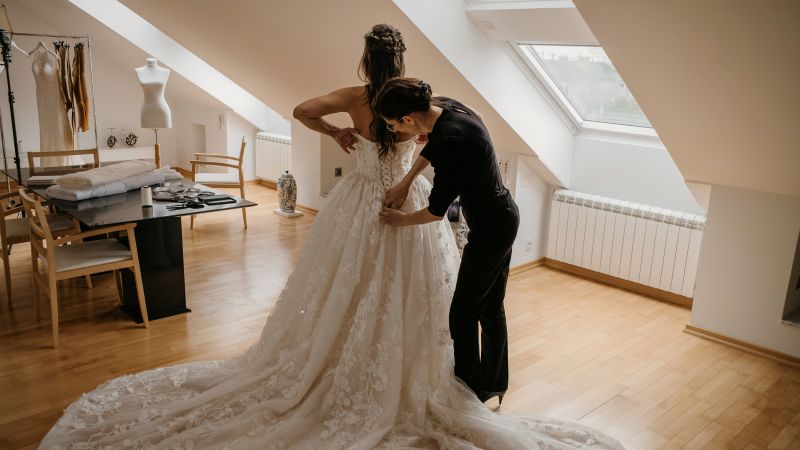The $73 billion wedding industry has long been plagued by price distortions and dysfunction, and the recent explosion of weight-loss drugs, such as GLP-1 drugs like Ozempic and Wegovy, has added an extra layer of complexity for seamstresses and designers responsible for creating bridal gowns. These drugs, which promise rapid weight loss, have become more accessible, leading many brides to use them ahead of their big day. The demand for these drugs is expected to grow further as employers consider covering them for weight loss, not just diabetes.
The bridal industry already faces challenges such as delays in dress orders, with COVID-19 disruptions causing orders that used to take three months to take much longer. Additionally, the increasing demand for weight-loss drugs presents a timing issue when it comes to buying wedding dresses. Brides are advised to purchase their gowns eight to 10 months before the event, but significant weight loss while taking GLP-1 drugs can complicate the fitting process. Some brides have lost up to 50 pounds with Ozempic, creating difficulties in ensuring the dress fits properly.
The drastic weight loss resulting from these drugs can pose challenges for seamstresses who are responsible for altering the bridal gowns. While most gowns can be taken in several inches, extreme weight loss may require the purchase of a new dress entirely, adding financial pressure to the bride. Seamstresses, who already spend a significant amount of time altering gowns, are faced with the additional work caused by rapidly slimming brides. This can result in more fittings, more time, and more work for the same amount of money.
The unintended downstream effects of the Ozempic Era are disproportionately hard on women, both brides grappling with societal expectations around weight and the seamstresses who are doing the labor to make wedding dress dreams come true. The stress of meeting unrealistic weight and appearance expectations adds to the emotional burden on both sides. Amidst the physical work of altering the gowns, seamstresses also provide emotional support to brides, acting as both seamstresses and psychologists. Many seamstresses in the United States are immigrant women who are often underpaid, adding an additional layer of complexity to the issue.
Overall, the growing use of weight-loss drugs in the bridal industry is creating challenges for both brides and seamstresses. The pressures of meeting weight and appearance expectations, coupled with delays in dress orders and alterations, are leading to a more stressful and complex process for all involved. The financial risks, emotional burden, and increased workload faced by seamstresses highlight the need for more awareness and support within the industry to ensure a positive experience for brides and those working behind the scenes.













